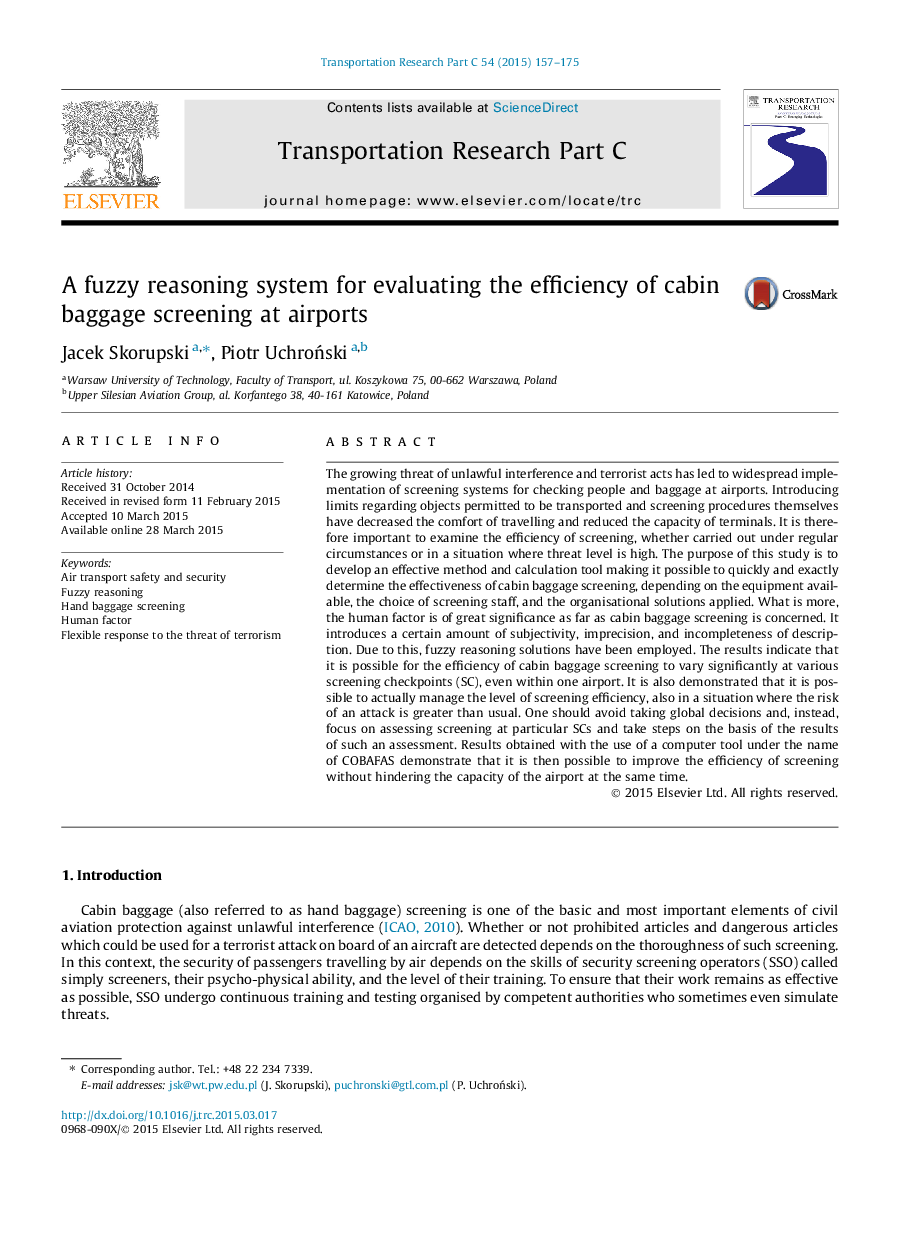| کد مقاله | کد نشریه | سال انتشار | مقاله انگلیسی | نسخه تمام متن |
|---|---|---|---|---|
| 524926 | 868872 | 2015 | 19 صفحه PDF | دانلود رایگان |
• A model for assessment of cabin baggage screening efficiency was created.
• Human factor and the technical factor were taken into account collectively.
• Hierarchical fuzzy inference system was used and implemented.
• Cabin baggage screening efficiency was determined in real conditions.
• Method and software for airport management support were developed.
The growing threat of unlawful interference and terrorist acts has led to widespread implementation of screening systems for checking people and baggage at airports. Introducing limits regarding objects permitted to be transported and screening procedures themselves have decreased the comfort of travelling and reduced the capacity of terminals. It is therefore important to examine the efficiency of screening, whether carried out under regular circumstances or in a situation where threat level is high. The purpose of this study is to develop an effective method and calculation tool making it possible to quickly and exactly determine the effectiveness of cabin baggage screening, depending on the equipment available, the choice of screening staff, and the organisational solutions applied. What is more, the human factor is of great significance as far as cabin baggage screening is concerned. It introduces a certain amount of subjectivity, imprecision, and incompleteness of description. Due to this, fuzzy reasoning solutions have been employed. The results indicate that it is possible for the efficiency of cabin baggage screening to vary significantly at various screening checkpoints (SC), even within one airport. It is also demonstrated that it is possible to actually manage the level of screening efficiency, also in a situation where the risk of an attack is greater than usual. One should avoid taking global decisions and, instead, focus on assessing screening at particular SCs and take steps on the basis of the results of such an assessment. Results obtained with the use of a computer tool under the name of COBAFAS demonstrate that it is then possible to improve the efficiency of screening without hindering the capacity of the airport at the same time.
Journal: Transportation Research Part C: Emerging Technologies - Volume 54, May 2015, Pages 157–175
